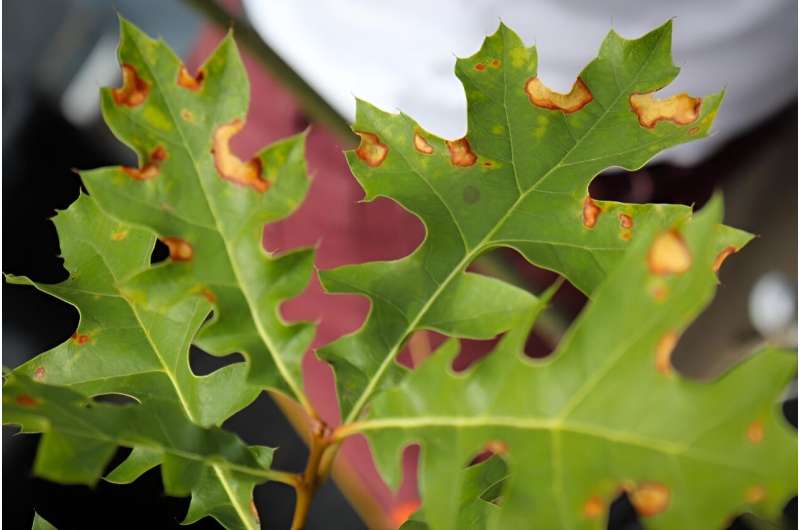Diagnosing oak wilt with the naked eye

University of Minnesota researchers developed a groundbreaking method for the rapid and accurate detection of oak wilt, a devastating disease threatening oak trees across North America. The disease is widespread in east-central and southeast Minnesota, though its range continues to expand northward, according to the DNR. Early detection methods are necessary in efforts to control the progression of this disease.
The work is in the journal Plant Methods.
The researchers created a diagnostic tool by incorporating gold nanoparticles into the Loop-mediated isothermal amplification (LAMP) assay. The LAMP assay is a desirable tool for field diagnostics because it is quick, reliable, low cost and requires minimal preparation.
"This study introduces a novel approach that simplifies and speeds up the diagnosis of oak wilt, potentially transforming disease management practices for this serious threat to oak tree health in both natural and urban ecosystems in Minnesota," said co-author Akli Zarouri, a researcher in the College of Food, Agricultural and Natural Resource Sciences.
They found:
- Gold nanoparticles react with the DNA molecules to create a distinct red pellet in the presence of the pathogen.
- By using a naked eye detection, the tool provides results in 30 minutes.
- The assay was rigorously tested on infected and healthy red oak samples, demonstrating exceptional sensitivity and specificity. It also proved effective with crude DNA extracts from diseased wood, streamlining the diagnostic process.

"This LAMP assay, with its rapid processing and easy visualization, offers a powerful tool for field diagnosis of oak wilt, and holds potential for broader applications in plant pathology," said lead author Vinni Thekkudan Novi, now a researcher at the USDA who completed this work as a graduate fellow in the U of M's College of Food, Agricultural and Natural Resource Sciences.
The researchers are in the process of field testing this technology so that it will be available for land managers in the near future.
Future research may focus on validating the LAMP assay under field conditions with a larger sample size to better represent oak wilt epidemiology and ensure consistent diagnostic sensitivity and specificity. Additionally, optimizing the assay for different environmental conditions for the visualization step could make it applicable and easier to use in various settings.
More information: Vinni Thekkudan Novi et al, A rapid LAMP assay for the diagnosis of oak wilt with the naked eye, Plant Methods (2024).
Provided by University of Minnesota















